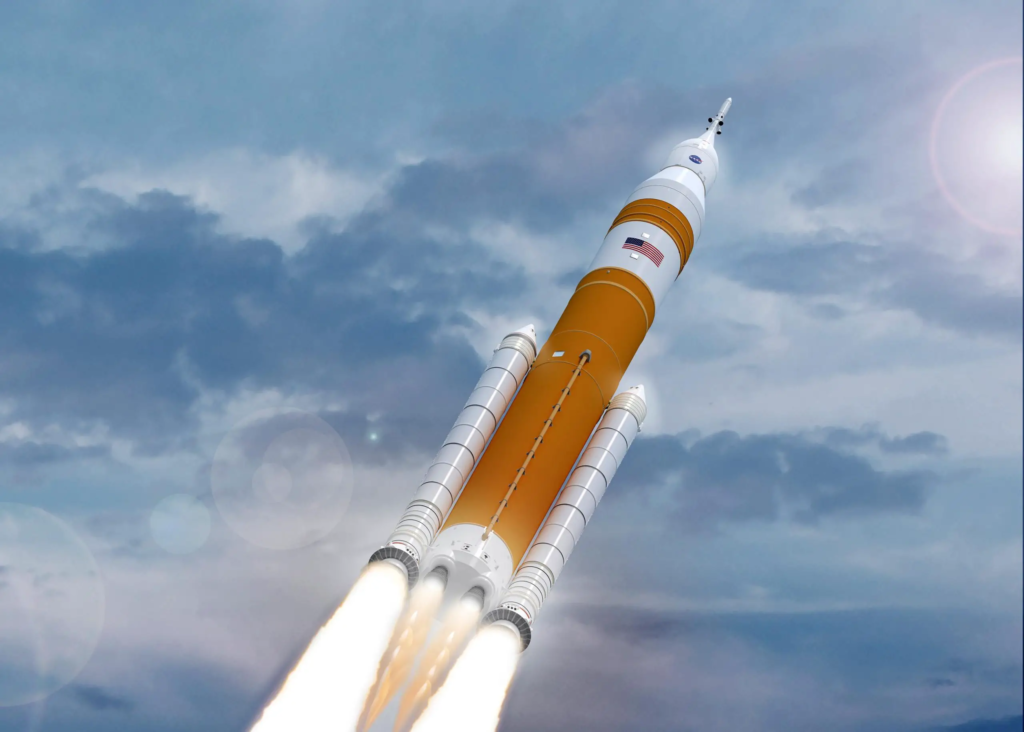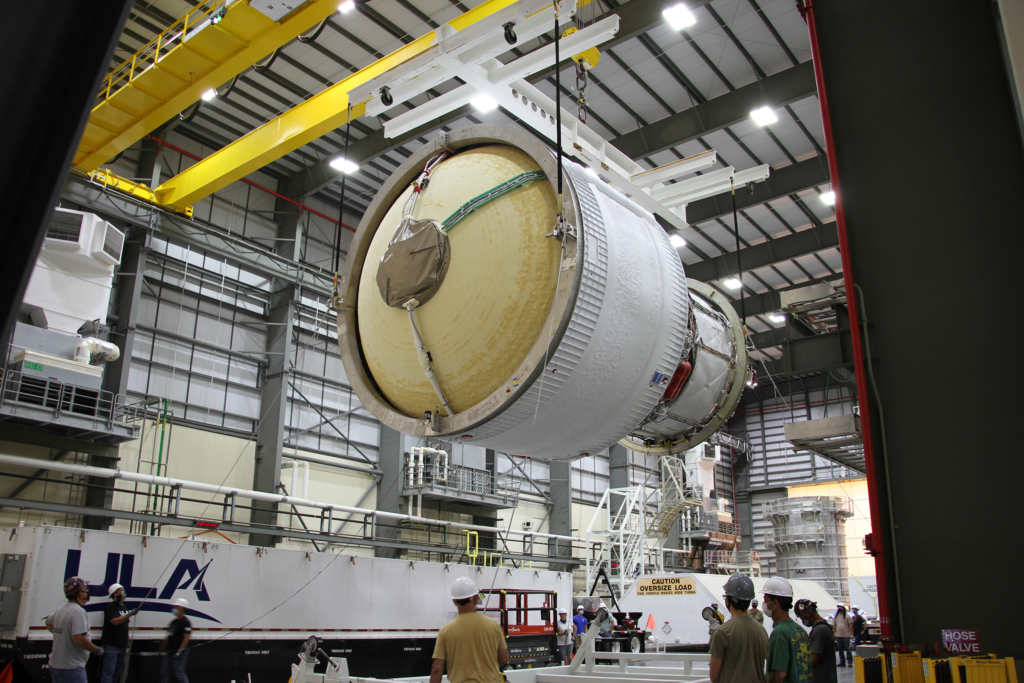
NASA’s Artemis II Mission Is Coming Together Fast
It’s already been almost half a year since SLS lifted off for the first time and made the successful journey to the Moon and back. The data and results from Artemis I have given NASA the confidence to move on to the next big step, launching humans. While this second mission seems far away, in reality, we are relatively close to some significant testing and preparation.
Already we are seeing completed upper stages being delivered and construction on the launchpad underway. This comes in addition to the astronaut selection which was recently announced. Artemis II has some major differences from the first mission to not only ensure the safety of the astronauts on board, but also gather all the data necessary for the next step, landing humans on the surface.
If successful, we will be one step closer to making history as the agency puts everything into Artemis III and beyond. Here I will go more in-depth into important mission updates, the Artemis II mission profile, what to expect in the coming months, and more.
New Updates

When it comes to the SLS rocket, which is the core of the Artemis II mission, its comprised of different complex parts from partners around the country and even the globe. Most recently, just days ago on the 10th, the second Interim Cryogenic Propulsion Stage (ICPS), derived from the United Launch Alliance (ULA) Delta IV Heavy rocket, began pre-flight testing and preparations. The ICPS serves as the upper stage of the Space Launch System (SLS) rocket to send the Orion spacecraft on lunar exploration missions.
ULA (responsible for this component) has manufactured three ICPS stages in its factory in Decatur, Alabama, under a collaborative partnership with Boeing. The stages will be used for the initial three SLS rockets. ICPS-2 was delivered to ULA facilities at Cape Canaveral in 2021. The stage recently came out of storage and moved into a test cell at the Delta Operation Center to begin undergoing checkouts and processing to support the Artemis II launch.
They noted that ICPS-1 performance for the Artemis I mission was nominal, delivering the push needed to send Orion out of Earth orbit to travel around the Moon. With humans on the next mission, there are a few changes to the system. For example, the ICPS for Artemis II also includes an Emergency Detection System (EDS) and other hardware changes specific to human safety. The stage feeds liquid hydrogen and liquid oxygen to the Aerojet Rocketdyne RL10C-2 main engine to produce 24,750 pounds (110.1 kilo-Newtons) of highly efficient thrust.
In February this year, NASA flipped the engine section for the Artemis 2 core to horizontal, the final major milestone before mating the section to the rest of the vehicle. In March, it was announced that NASA had fully integrated all five major structures of the Space Launch System (SLS) rocket’s core stage for Artemis II. Technicians joined the engine section to the rest of the rocket stage on March 17. As of right now, NASA and Boeing, the core stage lead contractor, along with Aerojet Rocketdyne, the RS-25 engine lead contractor, are preparing to install the engines to the base of the rocket’s core stage. This core stage and its RS-25 engines will produce more than 2 million pounds of thrust at launch.
As for the capsule, months ago, Lockheed Martin engineers and technicians powered on NASA’s Orion crew module for the Artemis II mission. A major milestone for the program, the initial power-on activity was the first time the two vehicle management computers and the eight power and data units were installed in the crew module, loaded with flight software, and tested. Some of the non-core avionic components on Artemis I will be reused on Artemis II such as guidance navigation and control, and radio communications antennas and transponders. The video processing unit will also likely be reused. A feature helping try to keep the mission on track.
Lastly, with Artemis in mind, the Starship integrated test flight is scheduled for tomorrow. Just one mission away, Artemis III will rely on the Starship lunar lander to carry humans to the surface of the Moon, provide them with life support systems, and bring them back up to Orion. This first test flight will have a major impact on the development of this launch vehicle and the lunar variant as well. Earlier today the company tweeted saying, “Teams are completing final checkouts and reviews ahead of Starship’s first flight test attempt; weather is looking pretty good for tomorrow morning but we’re keeping an eye on wind shear.” A fully successful test flight would be a great sign not only for SpaceX and the Starship program in general, but also for the future of Artemis and returning humans to the surface of the Moon.
Artemis II Overview

Artemis I was an exciting mission and featured many firsts. Most importantly, NASA gathered an immense amount of data about each and every system within the SLS rocket. All of which is currently being used in preparation for Artemis II. While the two missions will share some features, there will also be some big differences.
Astronauts on their first flight aboard SLS and Orion will venture around the Moon. The purpose of this mission is to confirm all of the spacecraft’s systems operate as designed with crew aboard in the actual environment of deep space. The mission will launch a crew of four astronauts from NASA’s Kennedy Space Center in Florida on a Block 1 configuration of the Space Launch System (SLS) rocket. This is the same configuration as Artemis I and will also be used for Artemis III. The flight profile is called a hybrid free return trajectory. Orion will perform multiple maneuvers to raise its orbit around Earth and eventually place the crew on a lunar free return trajectory in which Earth’s gravity will naturally pull Orion back home after flying by the Moon.
The initial launch will be similar to Artemis I as SLS lofts Orion into space, and then jettisons the boosters, service module panels, and launch abort system, before the core stage engines shut down and the core stage separates from the upper stage and the spacecraft. With crew aboard this mission, Orion and the upper stage will then orbit Earth twice to ensure Orion’s systems are working as expected while still close to home.
After a burn to enter high-Earth orbit, Orion will separate from the ICPS. From here, the crew will turn control of Orion back to mission controllers at Johnson and spend the remainder of the orbit verifying spacecraft system performance in the space environment. They will remove the Orion Crew Survival System suit they wear for launch and spend the remainder of the in-space mission in plain clothes. While still close to Earth, a large assortment of tests and checks will be performed to make sure everything is in order and safe for the astronauts. After completing checkout procedures, Orion will perform the next propulsion move, called the translunar injection (TLI) burn. With the ICPS having done most of the work to put Orion into a high-Earth orbit, the service module will provide the last push needed to put Orion on a path toward the Moon. The TLI burn will send crew on an outbound trip of about four days and around the backside of the moon where they will ultimately create a figure eight extending over 230,000 miles from Earth before Orion returns home.
On the remainder of the trip, astronauts will continue to evaluate the spacecraft’s systems, including demonstrating Earth departure and return operations, practicing emergency procedures, and testing the radiation shelter, among other activities. The Artemis II crew will travel 6,400 miles beyond the far side of the Moon. From this vantage point, they will be able to see the Earth and the Moon from Orion’s windows, with the Moon close in the foreground and the Earth nearly a quarter-million miles in the background.
With a return trip of about four days, the mission is expected to last just over 10 days. Instead of requiring propulsion on the return, this fuel-efficient trajectory harnesses the Earth-Moon gravity field, ensuring that—after its trip around the far side of the Moon—Orion will be pulled back naturally by Earth’s gravity for the free return portion of the mission. Once back at Earth, the spacecraft will complete its final challenge with reentry into the atmosphere. Finally, Orion’s parachutes will deploy and the spacecraft will splashdown in the ocean before the crew secures the astronauts and equipment.
Following these first two test flights, Orion and a crew of four will once again travel to the Moon, this time to make history with the first humans to step foot on the Moon in over half a century. Beginning with Artemis III, NASA intends to launch crewed missions about once per year, with initial missions focused on establishing surface capabilities and building the Gateway in orbit around the Moon. During these missions, Starship is expected to play a very important role. “Together, these test flights will demonstrate the capabilities we need to land humans on the Moon and enable long-term missions for decades to come,” said Sarafin. “We will take the experience gained exploring the Moon to prepare for the next giant leap to Mars.” With Artemis II’s launch date scheduled for November 2024, more updates are expected soon.
Conclusion
NASA is making decent progress toward the second Artemis mission. Both the core and upper stages are close to complete structurally and will soon being testing to ensure the systems are in working order. We will have to wait and see how it progresses and the impact it has on the space industry.
